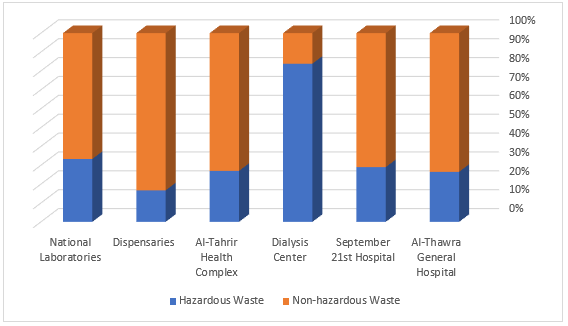Evaluation of Medical Waste Generated from Government Hospitals and Healthcare Centers in the City of Hodeidah, Yemen
Keywords:
Medical Waste, Healthcare, Management, Hodeidah, YemenAbstract
In the present study, the current status of medical waste management in the city of Hodeidah was presented in terms of its definition, components, sources, and threats that may result from improper handling. This investi-gation aims to study the potential environmental and health impacts of existing medical waste produced by the government hospitals and healthcare entities in Hodeidah City, in addition to comparing the applied methods and procedures with the methods and procedures that are applied in developed countries. The research study was carried out from January 2022 until January 2023, and targeted ten government hospitals and healthcare institutions in Hodeidah City. It relied on descriptive and analytical scientific methods, which aim to describe and analyze medical solid waste generated from the selected institutions. The result of the study showed that the total quantities of waste produced in all studied government health facilities amounted to approximately 599,038 kg/year. The percentage of non-hazardous waste was about 67% against hazardous waste which was 33%. Hospitals that receive more patients and have more beds as well as a multiplicity of their specialties generate larger medical wastes. The present research investigation revealed that government hospitals and healthcare centers in the city of Al-Hodeidah have low levels of health and safety conditions. They do not meet the local and international standards and requirements in the Medical Waste Management Guides and Recommendations. The poor management situation of medical waste could expose Yemeni citizens to danger. The healthcare insti-tutions should be supervised and controlled and ensure management of medical waste following environmental regulations and laws.
Downloads

Published
How to Cite
Issue
Section
Copyright (c) 2024 Mohammed Y. Talhi, Hisham Mohamed Nagi

This work is licensed under a Creative Commons Attribution-NonCommercial-NoDerivatives 4.0 International License.
